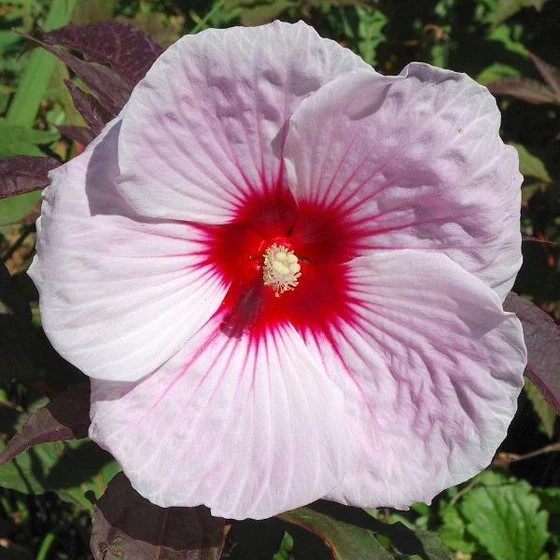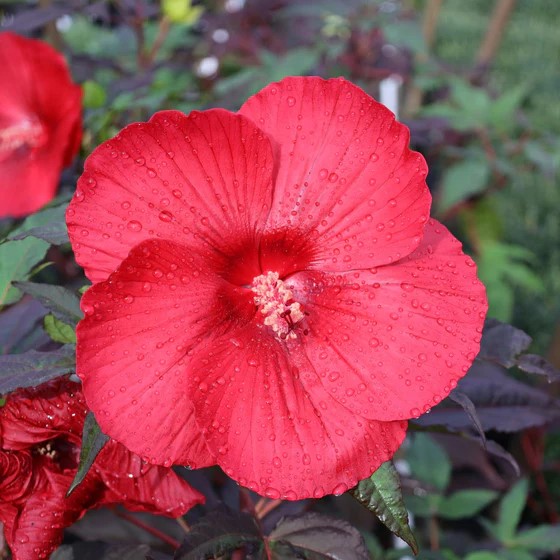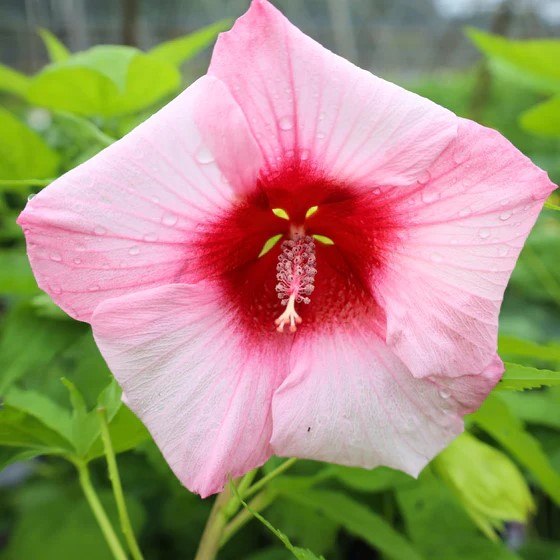How to grow and care for hibiscus – and add a touch of tropical to your backyard
Make a bold statement this year with a bounty of colorful hibiscus blooms

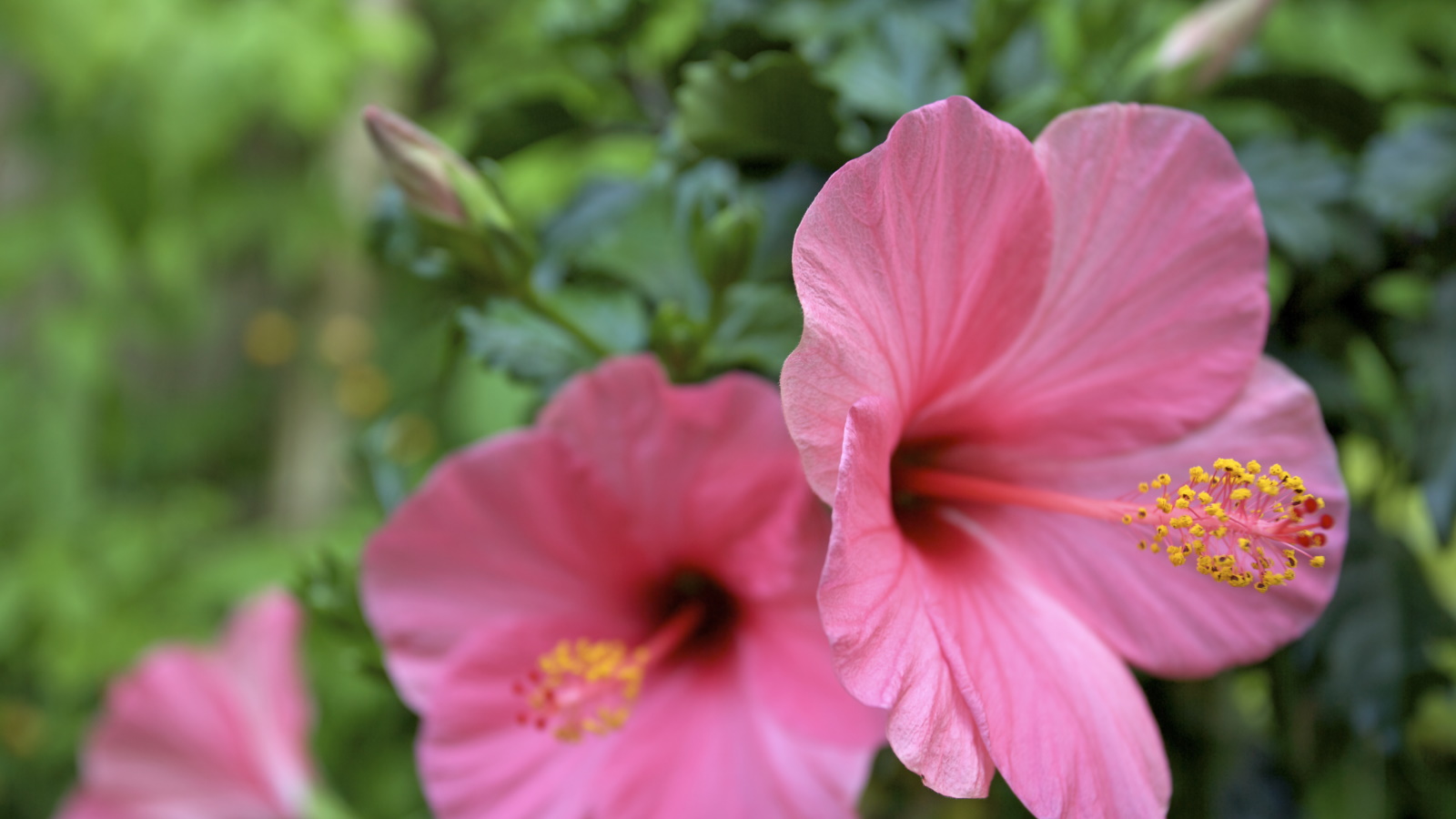
Hibiscus flowers bring vibrancy and a tropical look to any space, whether planted in a backyard border or grown in a container by the front door. If you are looking for tropical backyard ideas to brighten up your home, hibiscus must surely be the shrub for you. The diverse range of hibiscus species and varieties means there is quite possibly a different flower for every color, ranging from pinks to white, yellows to purple-black.
There are both hardy and tropical hibiscus shrubs, and your location will determine which hibiscus is right for you. Whilst many of the hardy species are native to North America, tender hibiscus species are native to warmer geographies, thriving in tropical and subtropical regions.
There are both evergreen and deciduous hibiscus options, considered by gardeners as some of the best flowering shrubs to have in your backyard.
Unsurprisingly, the hibiscus flower has been highly regarded in different cultures and by different communities across the world, with a recorded history dating back to ancient Egypt. Closer to home, hibiscus has become the state flower of Hawaii, specifically the yellow hibiscus, Hibiscus brackenridgei, also known as 'Pua Aloalo' or 'Ma`o-hau-hele' in Hawaii. This species is found growing across the islands of Hawaii, but sadly it is extremely rare and today considered an endangered species.
To add a touch of tropical to your home this year, learn how to grow and maintain hibiscus and discover how you can encourage masses of show-stopping blooms.
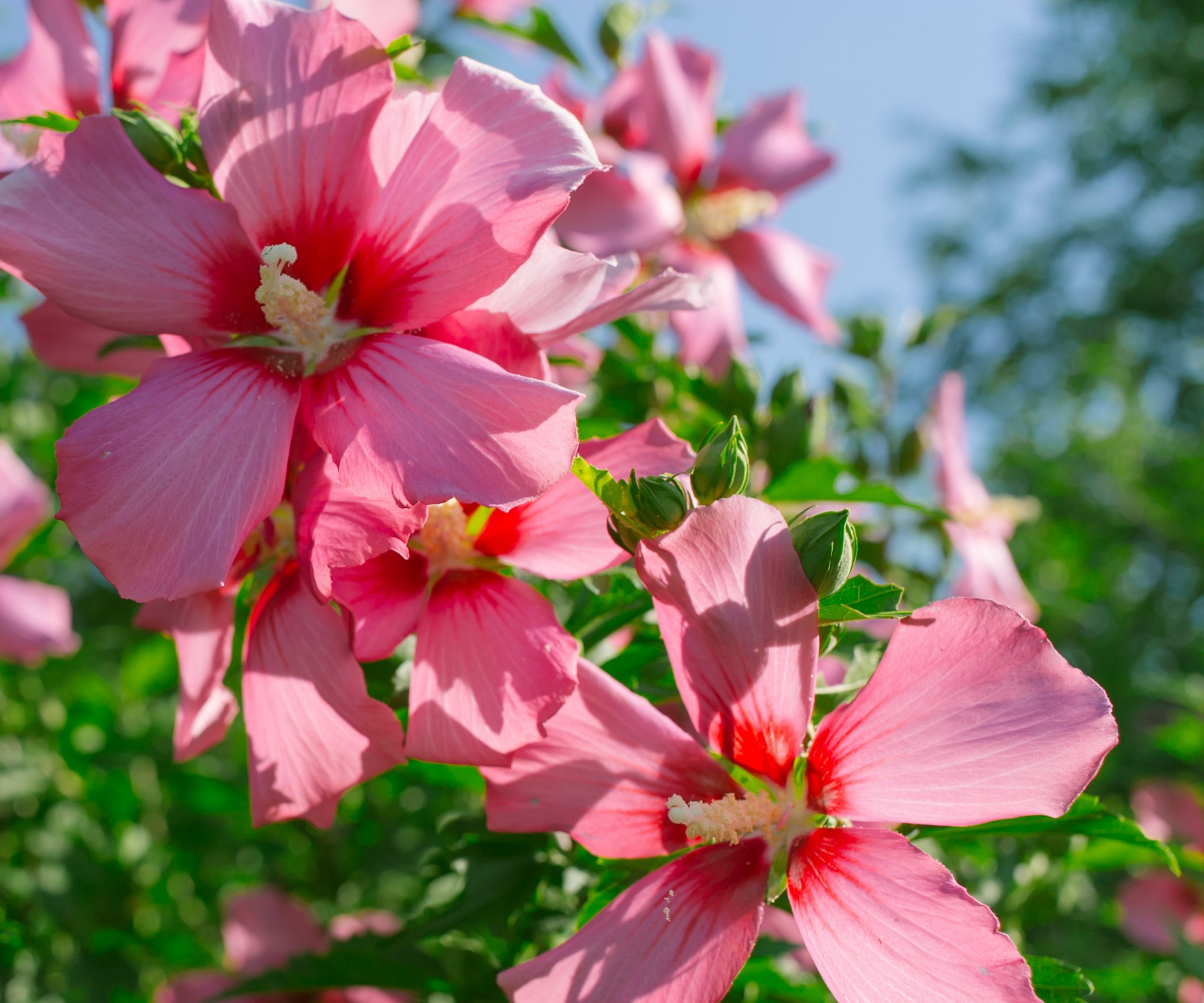
How to grow hibiscus - expert advice
Follow our simple guide below to grow a hibiscus shrub at home, transforming your backyard with masses of tropical, trumpet-like flowers this coming year. Fortunately for gardeners, these shrubs are easy to propagate from cuttings, and generally hibiscus pests and problems are manageable.
Things To Consider Before Growing Hibiscus
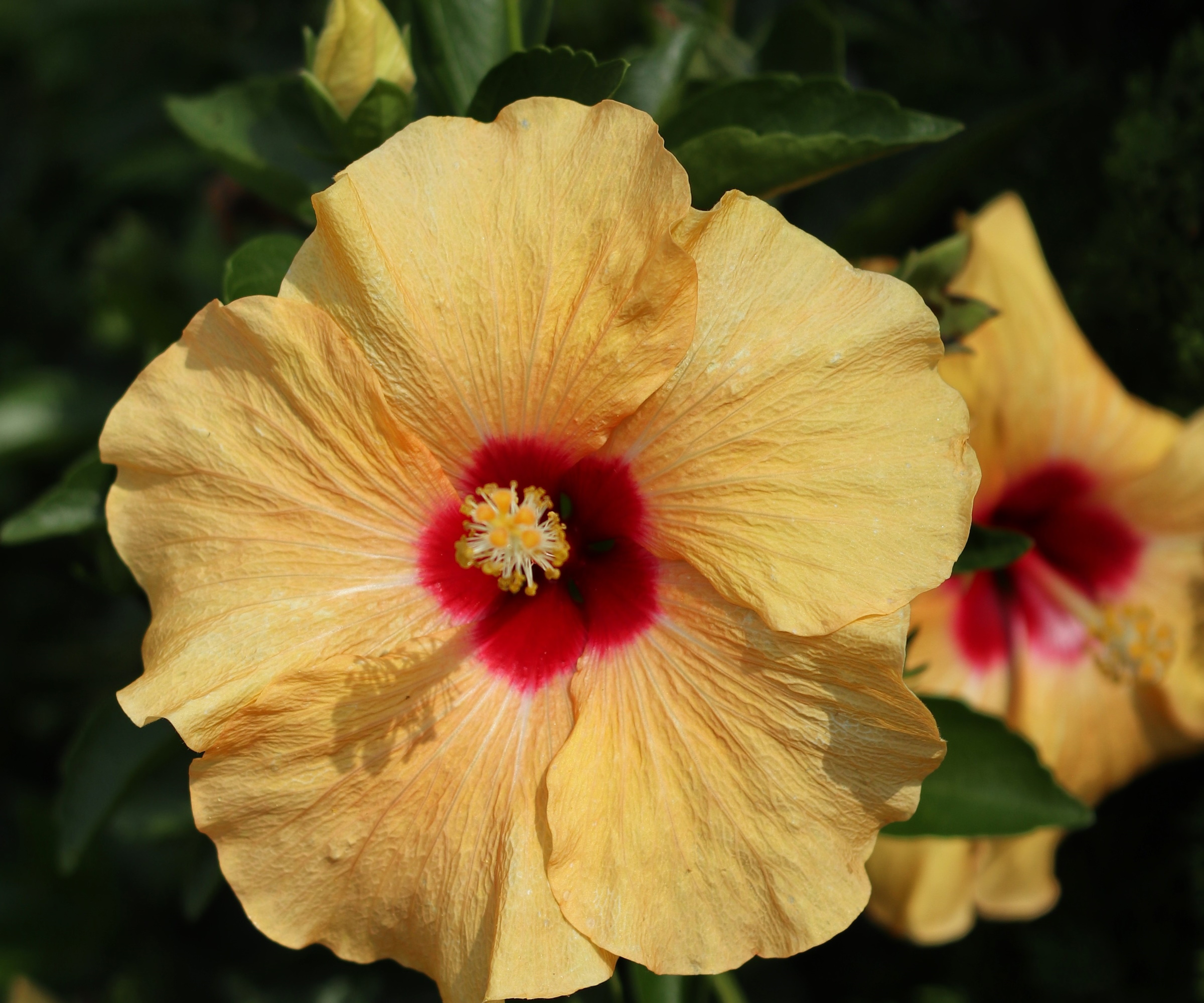
Before considering how to grow hibiscus, it is important to first identify what hibiscus shrub is right for you. 'There are two categories, tropical and hardy perennial,' says Tricia Hunt, plant expert and owner of Millstone Nursery. 'Both categories are stunning,' Tricia says, 'but have important differences and care requirements.'
Design expertise in your inbox – from inspiring decorating ideas and beautiful celebrity homes to practical gardening advice and shopping round-ups.
Hardy, perennial hibiscus will grow in US hardiness zones 4 - 9, whilst tropical varieties are suited to zones 9 - 11. Both options 'prefer acidic soil,' Tricia advises. 'One tip is to add coffee grounds' that can make the soil more acidic. In addition, both can 'thrive in the ground or containers,' Tricia continues, 'maintaining magnificent color and bloom unlike any other flowering plant.'
An added benefit of growing hibiscus is that all varieties attract both hummingbirds and pollinators, drawn to their open, trumpet-like blooms. Once in flower, your hibiscus will be alive with insect and bird life.
If you do have a preference for growing a tropical variety but live somewhere with cold winters, your only option is to winterize your hibiscus, meaning that you grow the plant in a container outdoors in the spring and summer, before bringing your plant indoors for fall and winter. With tender varieties, any chance of cold weather is a concern and can irreparably damage your plant.
All maintenance and planting specifics for your hibiscus shrub will be determined by whether it is a hardy or tropical variety and whether it is grown indoors or outdoors.
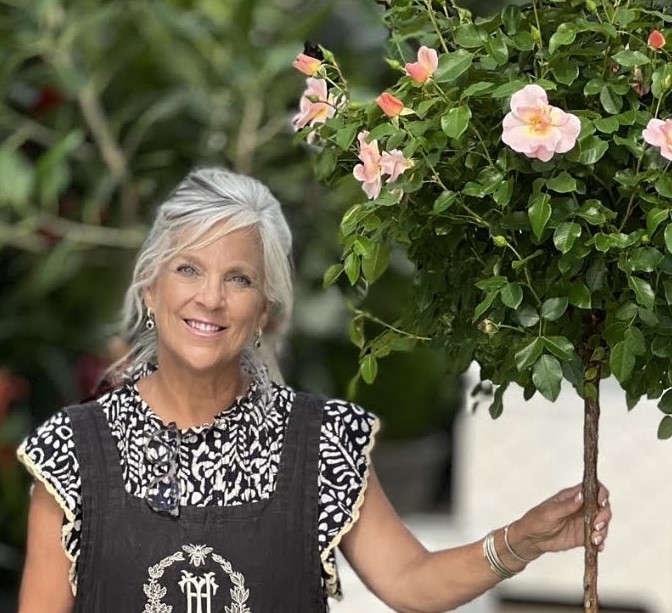
Tricia is the owner and operator of Millstone Market & Nursery, located in the heart of Germantown, Tennessee. Her sweet, Southern-instilled attention to customer service has grown her one-of-a-kind garden center into a destination.
Shop hardy hibiscus plants
General Advice for Planting And Maintaining Hibiscus
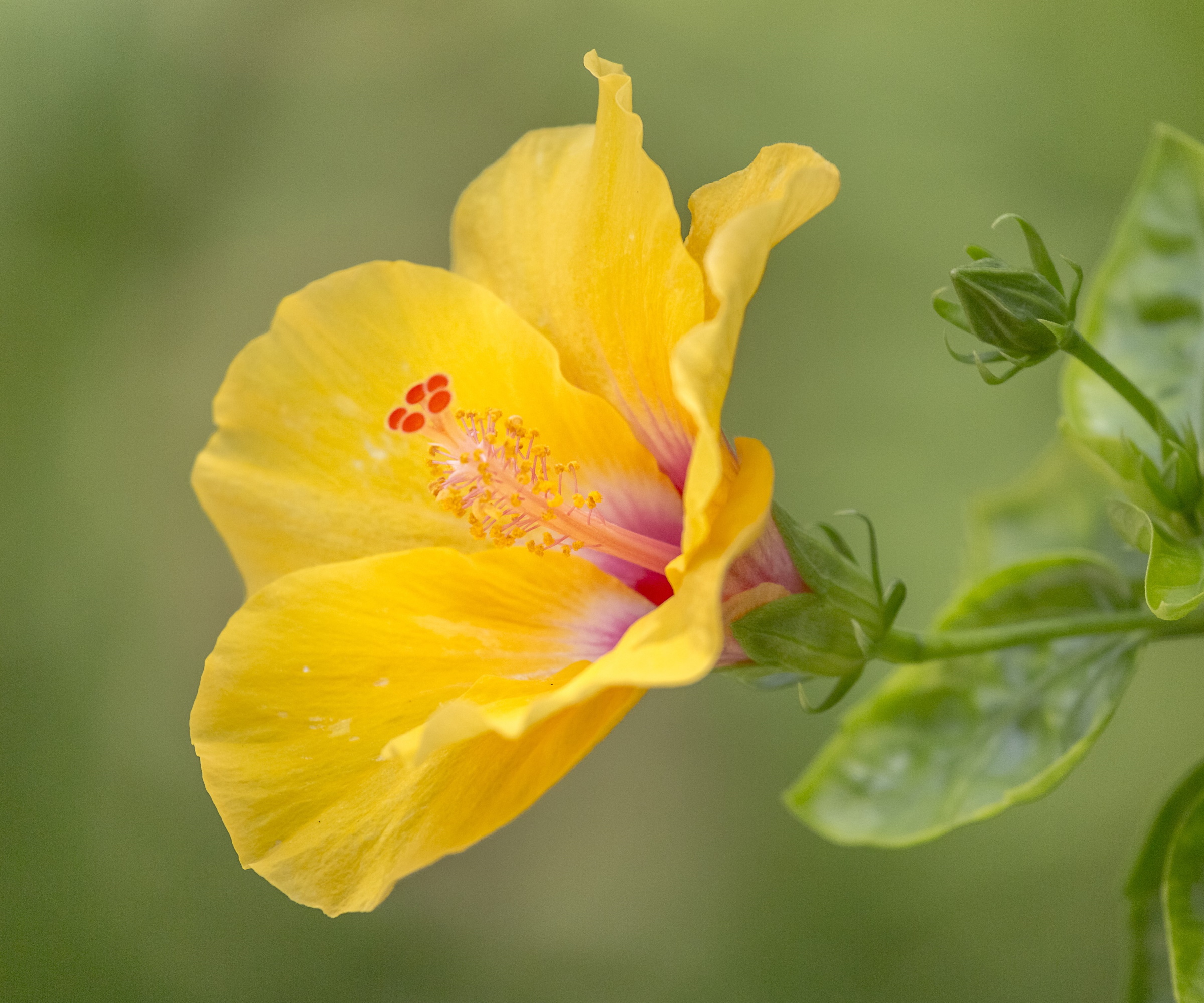
- Soil: 'Enhance the soil by incorporating some organic, nutrient-rich compost in the planting hole,' says Tatiana Anderson, plant expert and co-founder of Top Tropicals. In areas with 'alkaline, sandy or poor soils, your hibiscus might exhibit signs of iron deficiency, such as yellowing leaves,' Tatiana continues. One option is to make the soil more acidic, using a product such as this Soil Acidifier from Garden Goods Direct. For hibiscus growing in a container, 'opt for well-drained soil that leans towards the acidic side and is rich in organic matter.' It is important to note that the color of your hibiscus flowers can be affected by the acidity of the soil. If the flowers are not the anticipated color for the variety, consider assessing the soil pH using a device such as this Soil pH Meter from Walmart.
- Light: Most hibiscus varieties prefer partial to full sun. Whilst many will tolerate growing in shade, 'it is important to consider the practical consequences,' says Tatiana. 'Planting in low light conditions may result in a lack of flowers. Remember the more light, the more flowers.'
- Watering: Water regularly after planting, checking the soil frequently, especially during dry spells. 'Hibiscus has a penchant for water,' says Tatiana, 'but they are not a fan of soggy conditions.' Ensure that there is adequate drainage by adding drainage material when planting and using well-draining soil. It is recommended to monitor the soil after watering your hibiscus, to ensure that water can quickly and freely drain away.
- Fertilizing: 'Hibiscus plants are known to be heavy feeders,' says Tatiana. It is recommended to use a 'fertilizer with high phosphorus.' Bone meal is a source of phosphorus and a good option to consider, such as this Organic Bone Meal from Walmart. Whilst fertilizing hibiscus can help with flowering, if your hibiscus plant is in the wrong situation, for example, if you have planted in shade, feeding will not help, and over-fertilizing can harm the plant.
- Pruning: 'All hibiscus species and varieties respond well to pruning,' says Tatiana. Knowing how to prune hibiscus is important, as doing so correctly will result in 'bushier and fuller growth.' Whilst your pruning approach will be determined by your specific hibiscus, most will benefit from regular cutting to 'prevent the shrub from becoming too leggy,' says Tatiana. In general, tropical hibiscus shrubs prefer spring pruning, when the risk of frost has passed, whilst hardy, native shrubs will benefit from pruning in the fall once they have lost their leaves.
- Additional Tips: Hibiscus are prolific flowering shrubs, but blooms only tend to last for a day or two. Once the plant starts to flower, a daily job to remember is to deadhead hibiscus flowers and remove spent blooms as they finish flowering. If you are growing hibiscus in a container, remember to regularly water and feed throughout the growing season, and any tender, tropical varieties must be brought indoors before the first frost.

Tatiana Anderson is the co-owner and co-founder of Top Tropicals, based in Fort Myers, Florida. Top Tropicals grow and sell a whole range of flowering and fruiting tropical plants.
FAQs
When is the best time to prune hibiscus shrubs?
When thinking about how to prune hibiscus, remember that timings will be determined by the variety of your hibiscus shrub. Tropical hibiscus plants should only be pruned in spring when there is no risk of frost. Hardy hibiscus shrubs should be pruned in late fall or early winter. Remove any dead, damaged or diseased stems and any old wood, and prune to keep a compact, bushy and desirable shape.
When is the best time to plant hibiscus in my backyard?
It is best to plant hibiscus in the spring so that plants have an entire growing season of mild or warm weather to establish a good root system. Planting in the fall can be successful, but be warned that there is a chance that the cold weather can damage your young plant.
Hibiscus flowers will add color and impact to any space or yard. During the growing season, why not learn how to harvest hibiscus seeds? You can then sow, germinate and grow new hibiscus shrubs to fill your borders with colorful plants. For seasonal information, see our guide on what to do with hibiscus in the fall, and keep your plants in good shape through the colder months.

Thomas is a Content Editor within the Gardens Team at Homes and Gardens. He has worked as a professional gardener for both public spaces and private estates, specializing in productive gardening, growing food and flowers. Trained in Horticulture at the Garden Museum, he has written on gardening and garden history for various publications, including The English Garden, Gardens Illustrated, Hortus, The London Gardener and Bloom. He has co-authored a Lonely Planet travel book, The Tree Atlas, due out in 2024.
